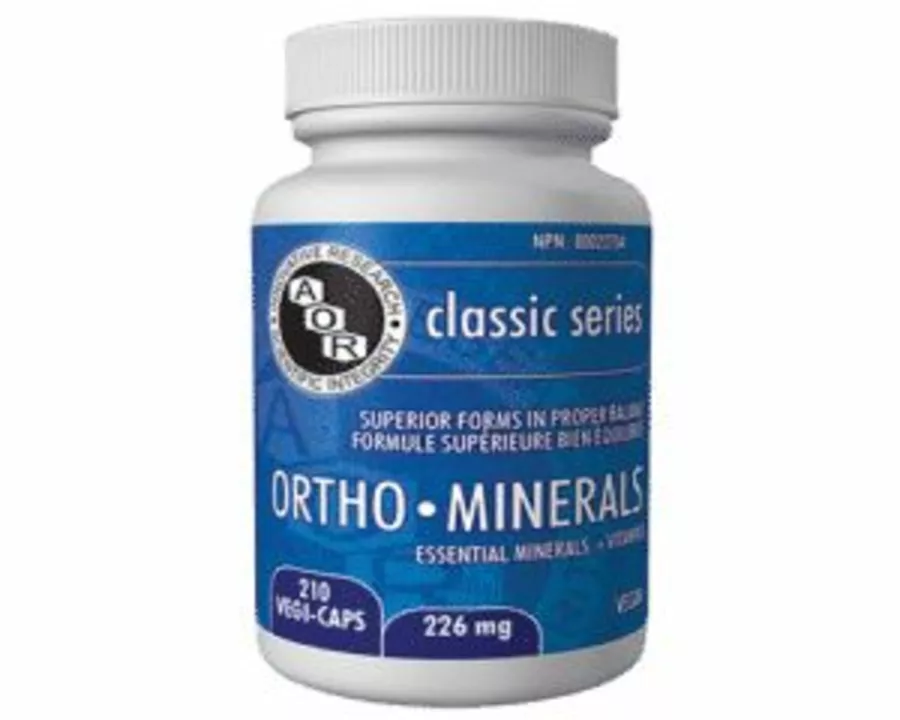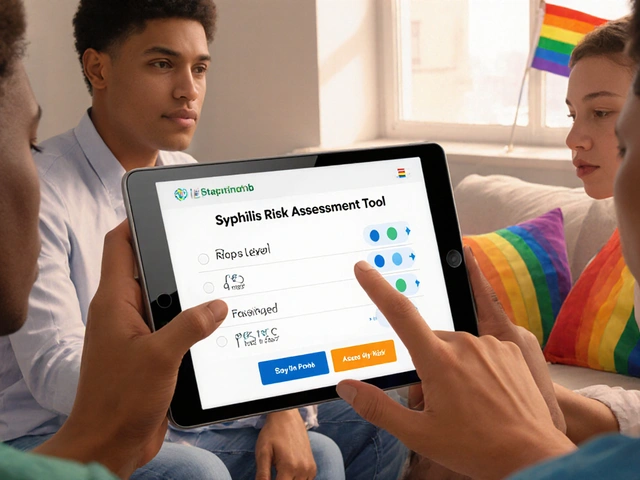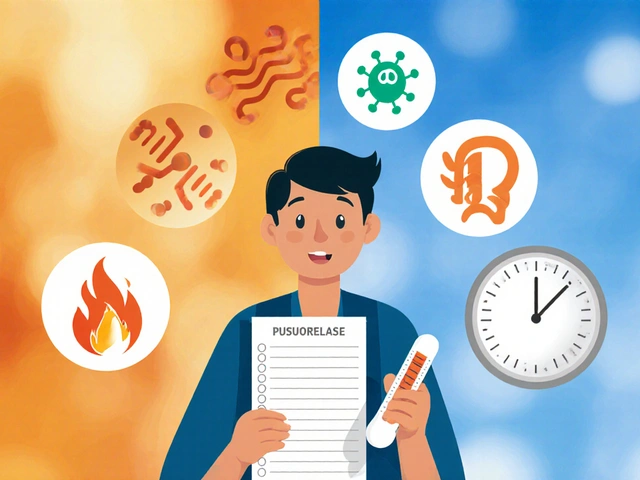
Understanding Chlorthalidone and Potassium
As a diuretic, chlorthalidone is a medication that is commonly prescribed to treat high blood pressure and fluid retention. This drug works by increasing the amount of urine produced by the kidneys, which helps to reduce the volume of fluid in the blood vessels. While effective in managing these conditions, it is essential to understand the impact that chlorthalidone can have on potassium levels within the body.
Potassium is a mineral and an electrolyte that plays a crucial role in maintaining proper nerve and muscle function, as well as acid-base balance. It is essential to maintain adequate potassium levels, as both high and low levels can lead to severe health complications. In this article, we will explore the relationship between chlorthalidone and potassium, as well as the importance of balancing electrolyte levels.
How Chlorthalidone Affects Potassium Levels
Chlorthalidone belongs to a class of diuretics known as thiazide diuretics. These medications work by inhibiting the reabsorption of sodium and chloride in the kidneys, which in turn leads to an increased excretion of water and electrolytes, including potassium. The loss of potassium through urine can result in a condition known as hypokalemia, or low potassium levels.
Hypokalemia can manifest through a variety of symptoms, such as muscle weakness, fatigue, and abnormal heart rhythms. In severe cases, it can even become life-threatening. Therefore, it is crucial to monitor potassium levels while using chlorthalidone and take appropriate measures to maintain a balance.
Signs of Low Potassium Levels
It is essential to be aware of the signs and symptoms of low potassium levels while taking chlorthalidone. Some common symptoms of hypokalemia include muscle cramps or weakness, fatigue, constipation, and heart palpitations. More severe symptoms can include paralysis, difficulty breathing, and changes in mental status, such as confusion or altered consciousness.
If you experience any of these symptoms while taking chlorthalidone, it is crucial to consult your healthcare provider as soon as possible. They can assess your potassium levels and recommend an appropriate course of action to restore balance.
Preventing Potassium Imbalance
There are several ways to prevent potassium imbalance while taking chlorthalidone. One of the most effective methods is to consume a diet rich in potassium. Foods high in potassium include bananas, oranges, potatoes, spinach, and yogurt. It is important to discuss your dietary needs with your healthcare provider, as they can recommend an appropriate diet plan based on your specific needs.
In some cases, your healthcare provider may recommend the use of potassium supplements to maintain adequate levels. It is important to follow their guidance and not take more than the recommended dose, as excessive potassium intake can also be harmful.
Monitoring Potassium Levels
Regular monitoring of potassium levels is essential while taking chlorthalidone. Your healthcare provider will likely perform blood tests to assess your potassium levels at the beginning of your treatment and periodically throughout its duration. This will help to ensure that your potassium levels remain within a safe range and allow for any necessary adjustments to your treatment plan.
It is essential to follow your healthcare provider's recommendations for monitoring and managing your potassium levels, as they have the knowledge and expertise to guide you through this process.
Potential Risks and Complications
While chlorthalidone is generally considered safe and effective for managing high blood pressure and fluid retention, it is essential to be aware of the potential risks and complications associated with its use. As previously mentioned, the primary concern with chlorthalidone is the potential for hypokalemia, or low potassium levels.
Additionally, chlorthalidone can interact with other medications, potentially leading to adverse effects or reducing their efficacy. It is crucial to inform your healthcare provider of all medications you are currently taking, including over-the-counter drugs and supplements, to ensure that chlorthalidone is safe and appropriate for your specific needs.
Conclusion
Chlorthalidone is an effective medication for managing high blood pressure and fluid retention, but it is essential to be aware of its potential impact on potassium levels. By understanding the relationship between chlorthalidone and potassium, you can take the necessary steps to maintain a healthy electrolyte balance and minimize the risk of complications. Always consult with your healthcare provider for personalized guidance on managing your potassium levels and overall health while taking chlorthalidone.
19 Comments
Michael Tribone
April 27, 2023 AT 18:15 PM
Love this breakdown! Seriously, so many people don't realize how sneaky diuretics can be. I started eating spinach smoothies daily and my energy shot up. Small changes, huge difference!
Nancy Lowry
April 28, 2023 AT 03:27 AM
If you're taking chlorthalidone and not monitoring your potassium, you're not just irresponsible-you're endangering yourself. I've seen too many patients with arrhythmias because they ignored this. Stop guessing. Get tested.
Khanyisa Mhlongo
April 28, 2023 AT 15:37 PM
OMG yes!! I was like ‘why am I so tired and my legs feel like jelly’ and turns out my K was at 3.1!! My aunt from Cape Town told me to eat papaya and coconut water-game changer. Now I’m basically a potassium ninja 🌴🍌
Manvika Gupta
April 28, 2023 AT 19:20 PM
i was on this med and forgot to eat my banana and got real dizzy. my doc said its common but still scary. now i always have a orange or sweet potato with my pills. its easy ppl!
Chloe McDonald
April 29, 2023 AT 13:54 PM
This is so helpful! I’ve been on this for 6 months and didn’t even know potassium was a thing. Now I snack on yogurt all day. Easy fix!
Hobert Finn Bodfish
April 30, 2023 AT 12:50 PM
STOP eating bananas and start taking KCl pills. Food doesn't cut it. I've been on this for 10 years and I take 20 megs a day. You're doing it wrong if you think fruit fixes this. #MedicalTruth
Andrea Galetto
May 1, 2023 AT 06:57 AM
It’s fascinating how laypeople assume dietary potassium is sufficient. The pharmacokinetics of thiazide-induced kaliuresis require clinical intervention-not grocery shopping.
Daniel Rogers
May 1, 2023 AT 14:32 PM
You got this! 💪 I was skeptical at first but adding potassium-rich foods made me feel like a new person. No more afternoon crashes. You’re not alone-keep going!
Chris Remo
May 2, 2023 AT 04:10 AM
I took this for hypertension. Didn't know about the potassium thing until I started feeling weird. A banana a day saved me. Seriously. No drama. Just eat the fruit.
Michael Herr
May 2, 2023 AT 18:33 PM
The science is clear. Monitor your labs. Adjust your diet. Follow up. That’s it. No need for hype or fear. Just do the basics.
Crystal Magnant
May 3, 2023 AT 08:26 AM
I took this med and felt fine... until I didn't. Now I eat a ton of avocados. 🥑 My doctor says I'm good. I just wish I'd known sooner.
Danie Joy
May 3, 2023 AT 22:24 PM
They don't tell you this because Big Pharma wants you dependent on supplements. Potassium is natural. Why not just stop the drug? The system is rigged. I stopped mine and my BP dropped naturally. They don't want you to know.
Katherine Stapp
May 4, 2023 AT 18:52 PM
This is why America is falling apart. People take meds without understanding. We used to eat real food and work. Now we eat bananas and call it health. Sad.
Frank De Silva
May 5, 2023 AT 02:07 AM
I suppose you think potassium from bananas is 'enough.' I’ve read the studies. You’re underestimating the clinical significance of renal potassium wasting. Your optimism is naive.
KJ Miller
May 5, 2023 AT 18:07 PM
You’re not alone in this. I was in the same boat. Started with a banana, added lentils, got tested. Now I feel like I’m 30 again. Small steps, big wins. You got this.
Claire Battista
May 6, 2023 AT 01:53 AM
Thank you for sharing this. I had no idea how dangerous low potassium could be. I’m going to talk to my doctor this week. It’s scary to think I could’ve ignored it for months.
Erin DeGroot
May 6, 2023 AT 08:35 AM
I’ve been on chlorthalidone for three years. My potassium levels are consistently monitored every three months. I eat spinach daily, drink coconut water, and take a low-dose supplement as prescribed. It’s not complicated-it’s just consistent.
Stephanie Bryant
May 6, 2023 AT 09:48 AM
i took this med and forgot about potassium and got real bad muscle spasms. my doc said i need to eat more oranges and potatoes. i did and i feel way better now. just dont forget!! 🍊🥔






Stephanie Cepero
April 27, 2023 AT 07:14 AM
I was on chlorthalidone for a year and almost ended up in the ER from cramps. My doctor didn't warn me about potassium. Don't let that happen to you. Eat bananas, seriously.